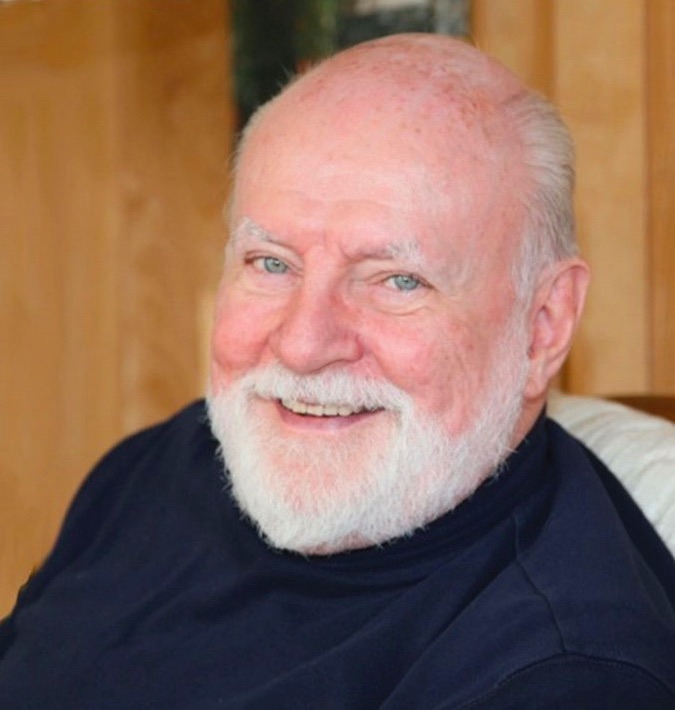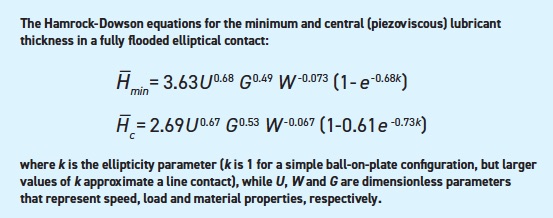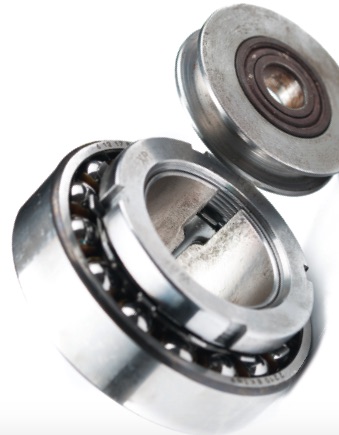An appreciation of Bernard J. Hamrock: tribologist, trailblazer, teacher
Drs. Wilfred T. Tysoe & Nicholas D. Spencer | TLT Cutting Edge April 2022
Bernard J. (“Bernie”) Hamrock’s many contributions to understanding lubrication and bearings will be his lasting memorial.
 Bernard J. Hamrock, 1939-2022. From Fundamentals of Machine Elements, Third Edition, by S.R. Schmid et al., 2013 by CRC Press. Reproduced by permission of Taylor & Francis Group.
Bernard J. Hamrock, 1939-2022. From Fundamentals of Machine Elements, Third Edition, by S.R. Schmid et al., 2013 by CRC Press. Reproduced by permission of Taylor & Francis Group.
We were saddened to hear of the death of Bernard J. “Bernie” Hamrock, who passed away at his home in Ohio on Feb. 4. Bernie’s long career in tribology had a significant influence on the field and on all those who came into contact with him.
Bernie was best known for his work on elastohydrodynamic lubrication (EHL). Of the lubrication regimes that we learn about as students, EHL generally makes the greatest impression. For some of us, it is because it explains how essential machine elements—such as gears, rolling element bearings and cams—can function, despite the high contact pressures involved. For others, the impact lies in the mathematical sophistication of the analysis. Whatever our feelings about EHL theory, it is crucial to our modern understanding of tribology and tells us how the thickness of a lubricant film varies with parameters such as load and speed in contacts of various shapes. Central to these relationships are the Hamrock-Dowson equations for the dimensionless minimum and central film thicknesses in a lubricated contact.
From the form of the equations
(see box), it is clear that they do not represent an analytical solution (and none exists to the present day). They were the result of numerical simulations, carried out by Bernie Hamrock, while a doctoral student under the tutelage of the late STLE Life Member professor Duncan Dowson at Leeds University in the 1970s,
1, 2 building upon earlier developments of numerical methods in Dowson’s group. Hamrock and Dowson also addressed the issues of starved lubrication
3 and the lubrication of soft materials
4 during this highly productive period of collaboration.

Son of a Slovakian immigrant, Bernie Hamrock earned his first degree at Youngstown State University in Ohio, working briefly on rolling element bearings in industry before enrolling as a NASA engineer at the famous Lewis Research Center in Cleveland, where he would stay for nearly two decades. Hamrock’s career was unusual, in that his doctoral studies (1973-1976) with Dowson were embedded within his long and successful period at NASA. In 1985, he joined the Mechanical Engineering Faculty at Ohio State University, teaching generations of students, carrying out extensive research in many facets of lubrication and bearing tribology and spending two productive sabbaticals in Lule University of Technology (Sweden) and the Technical University of Denmark.
Bernie was a prolific author of technical papers, many of which continue to form the basis of our understanding of lubrication and bearings. He won many accolades for this work while still at NASA, including its Exceptional Achievement Award (1984) and the Lewis Best Paper of the Year (1977). He also was frequently honored by the American Society of Mechanical Engineers (ASME), winning the Melville Medal (1976), two best paper awards from the Lubrication Division (1975 and 1976) and, in 2000, the Mayo D. Hersey Award for lifetime achievement in tribology. His books included “Ball Bearing Lubrication” (Wiley, 1981), “Fundamentals of Fluid Film Lubrication” (NASA, 1991, and McGraw-Hill, 1993) as well as “Fundamentals of Machine Elements” (McGraw-Hill, 1999), which has been an invaluable textbook for engineering students and professionals, and is now in its fourth edition.

Bernie was not only a highly influential tribologist, teacher and author but also a devoted husband, father and grandfather. He was a passionate sportsman, running several marathons, including the Boston Marathon, and was a proud member of Buckeye Nation! Bernie will be missed by family, friends and tribologists everywhere.
Acknowledgment
The authors are grateful to STLE member professor Steven R. Schmid of the University of North Carolina—a long-time collaborator of Bernie Hamrock—for his assistance in the preparation of this article.
REFERENCES
1.
Hamrock, B. J. and Dowson, D. (1976), “Isothermal elastohydrodynamic lubrication of point contacts, part I, theoretical formulation,”
ASME J. Lubr. Tech., 98, pp. 223-229.
2.
Hamrock, B. J. and Dowson, D. (1977), “Isothermal elastohydrodynamic lubrication of point contacts, part III, fully flooded results,”
ASME J. Lubr. Tech., 99, pp. 264-276.
3.
Hamrock, B. J. and Dowson, D. (1977), “Isothermal elastohydrodynamic lubrication of point contacts, part IV, starvation results,”
ASME J. Lubr. Tech., 99, pp. 15-23.
4.
Hamrock, B. J. and Dowson, D. (1978), “Elastohydrodynamic lubrication of elliptical contacts for materials of low elastic modulus I – fully flooded conjunction,”
ASME J. Lubr. Tech., 100, pp. 236-245.
Eddy Tysoe is a distinguished professor of physical chemistry at the University of Wisconsin-Milwaukee. You can reach him at wtt@uwm.edu.
Nic Spencer is emeritus professor of surface science and technology at the ETH Zurich, Switzerland, and editor-in-chief of STLE-affiliated Tribology Letters journal. You can reach him at nspencer@ethz.ch.